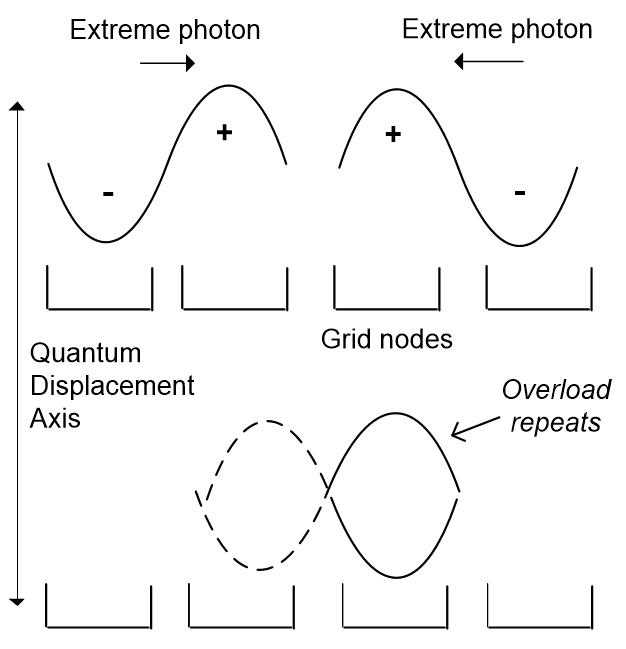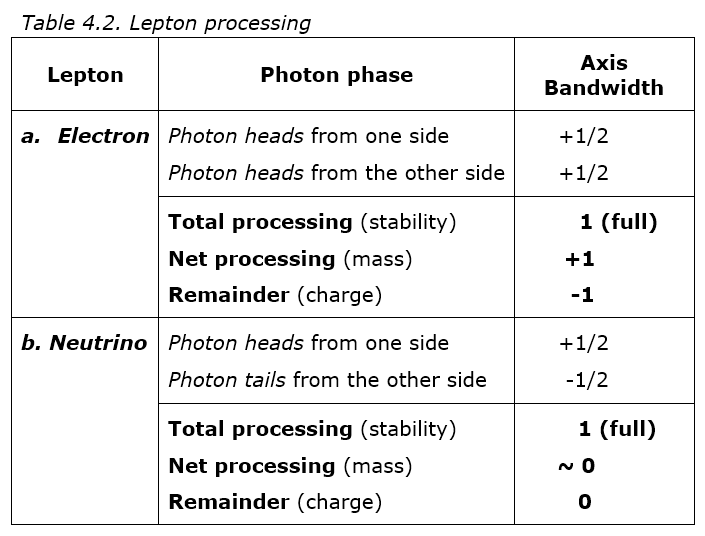Processing explains matter and charge but what about the electron’s little brother, the neutrino? The world we see needs electrons, as without them there is no chemistry, and so no life, but it also has vast numbers of a little nothing that until recently, we didn’t even know existed. The sun floods the earth with them every day but they mostly pass through it, like ghosts, so why did nature make so many of them?
The standard model expects neutrinos to have no mass at all because they have no charge, but their tiny mass was how we detected them in the first place. When asked why neutrinos have no charge but a tiny mass, the current answer is that they just do, but we knew that already.

However processing allows another possibility, as if electrons arise when photons collide in-phase, they can also collide out-of-phase. Figure 4.3 shows the result is that two points overload and one successfully reboots. Again, all the channels of an axis overload, but while a head-head collision gives an electron bump, a head-tail collision gives the little nothing we call a neutrino. The neutrino is then the byproduct of an electron rather than a useless building block.
But why isn’t a neutrino’s mass exactly zero, as its charge is? If the quantum network was perfectly synchronous it would be, but that isn’t so (see 2.4.4). If the photons in Figure 4.5 are slightly out of synch, the heads and tails won’t exactly cancel but the remainder still will, giving a tiny mass but no charge. For different neutrinos the asynchrony varies so their mass also varies despite their zero charge. If an electron is a bump on space, a neutrino is a smudge, whose tiny mass comes from the asynchrony of the quantum network.
Table 4.2 below shows how electrons and neutrinos arise when photons overload the bandwidth of an axis of a point of space, to produce:
1. Stability. If the total processing fills the axis bandwidth, the entity produced is stable.
2. Mass. The net processing after opposite displacements cancel defines its mass.
3. Charge. The net remainder after opposite displacements cancel defines its charge.
Note that a tail-tail meet isn’t possible because it implies a prior head-head meet.
In summary, extreme light can overload one axis of a point of space to give a constant standing wave. In the initial light plasma, these collisions produced stable electrons or neutrinos depending on phase. They are brother leptons because both are one-dimensional matter, though to us, one is something and the other almost nothing.
